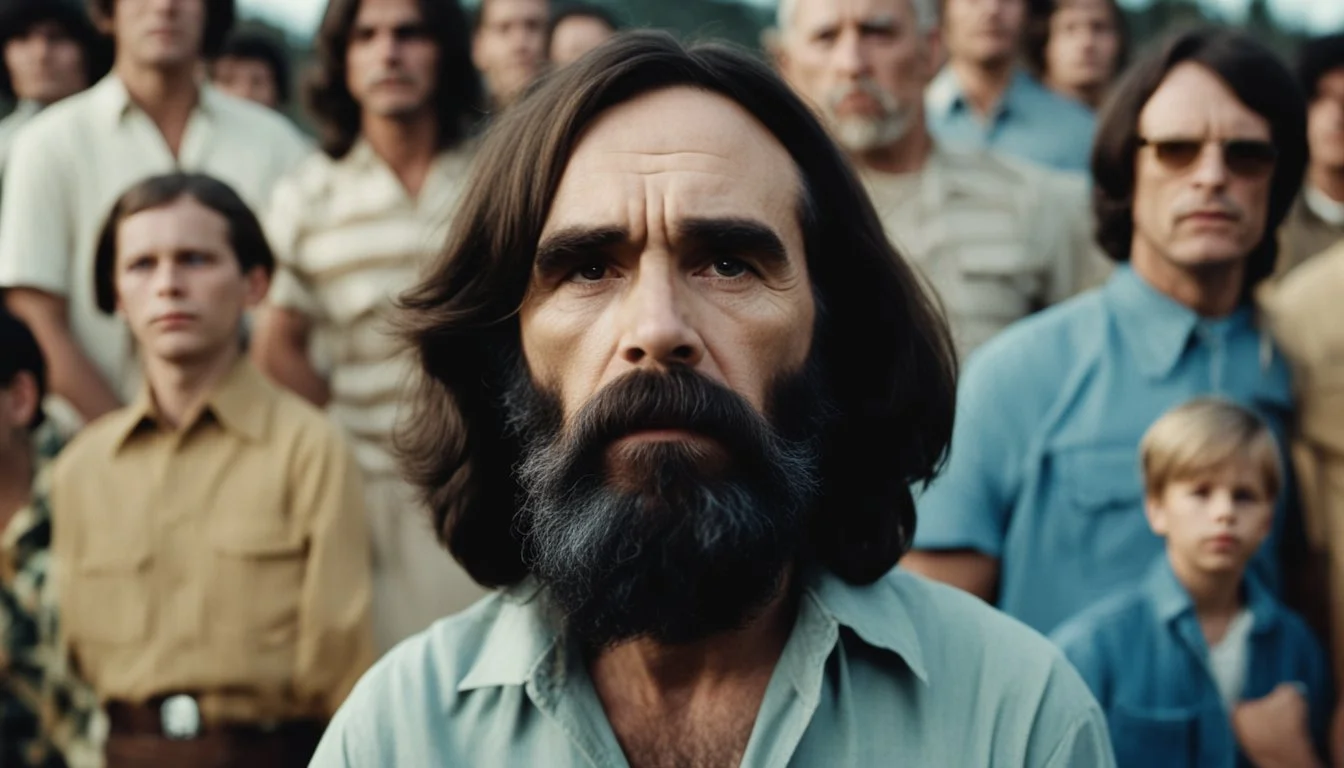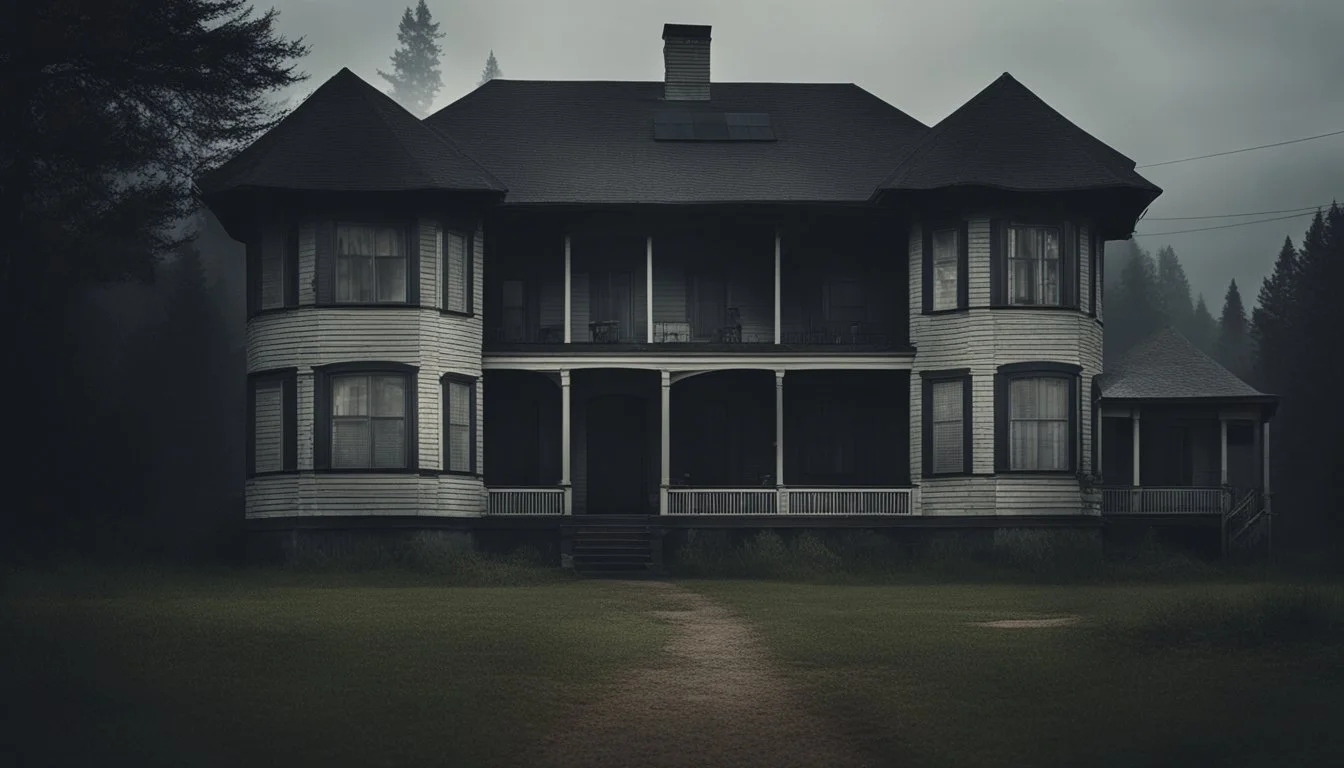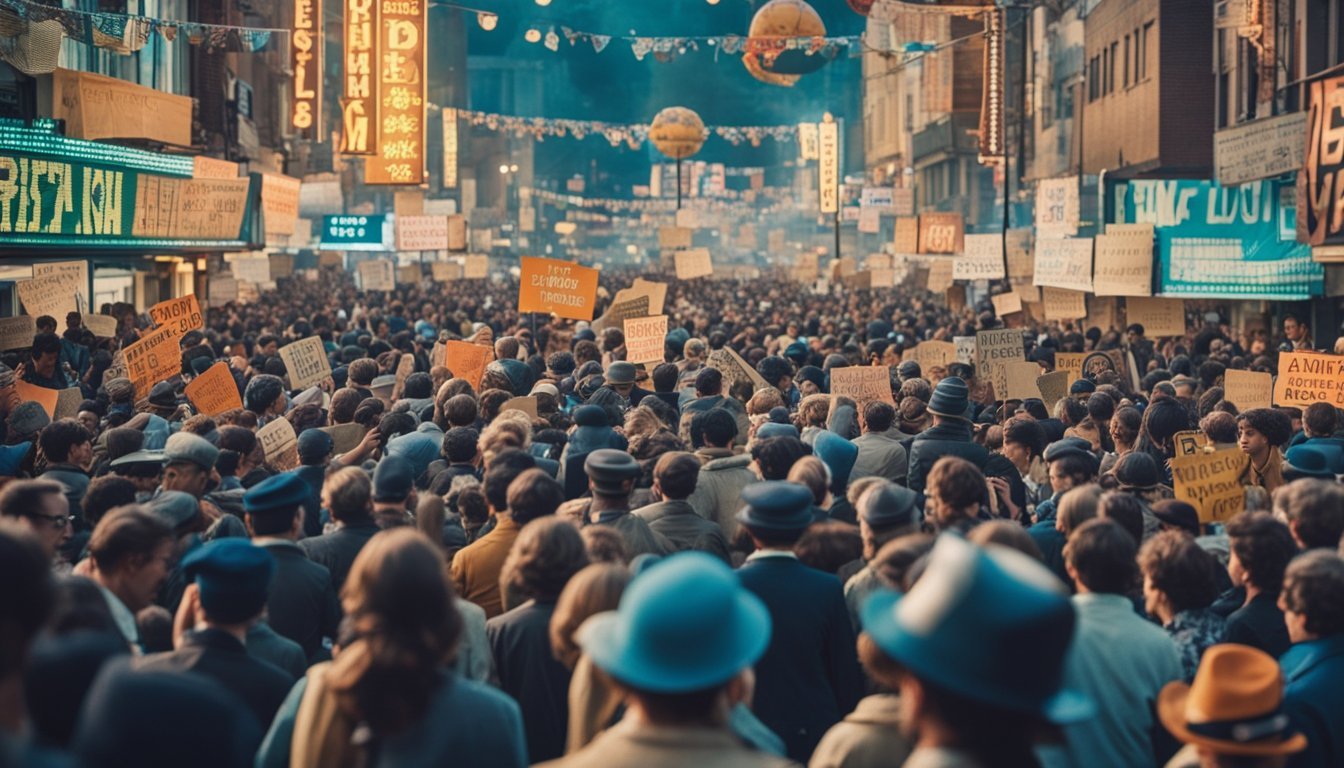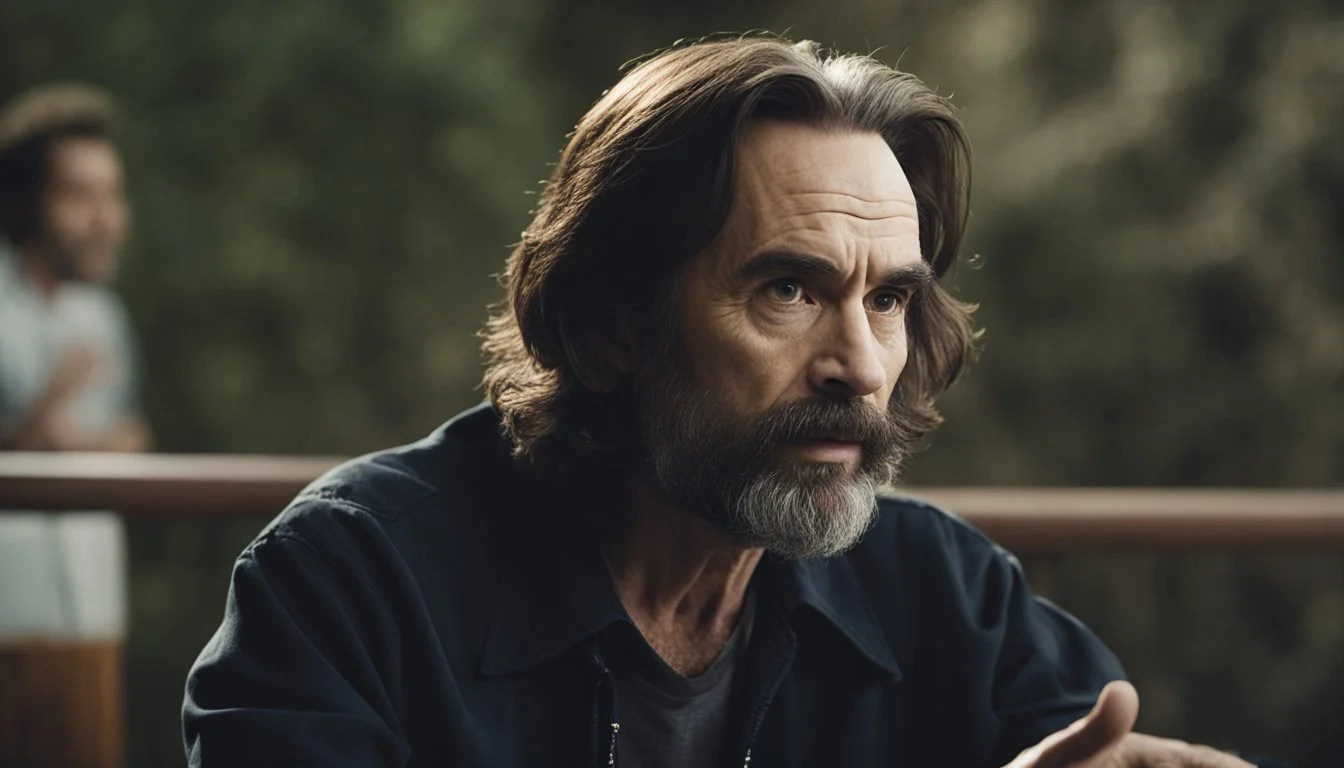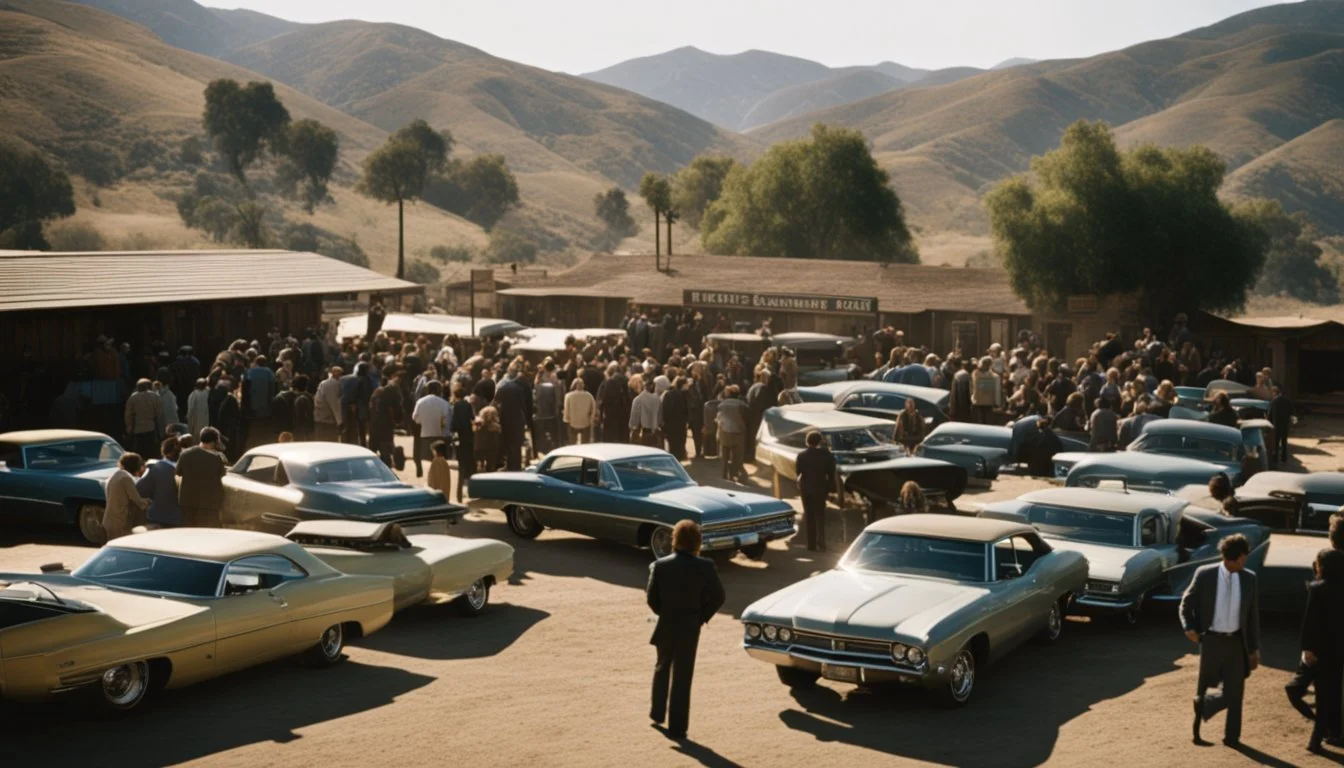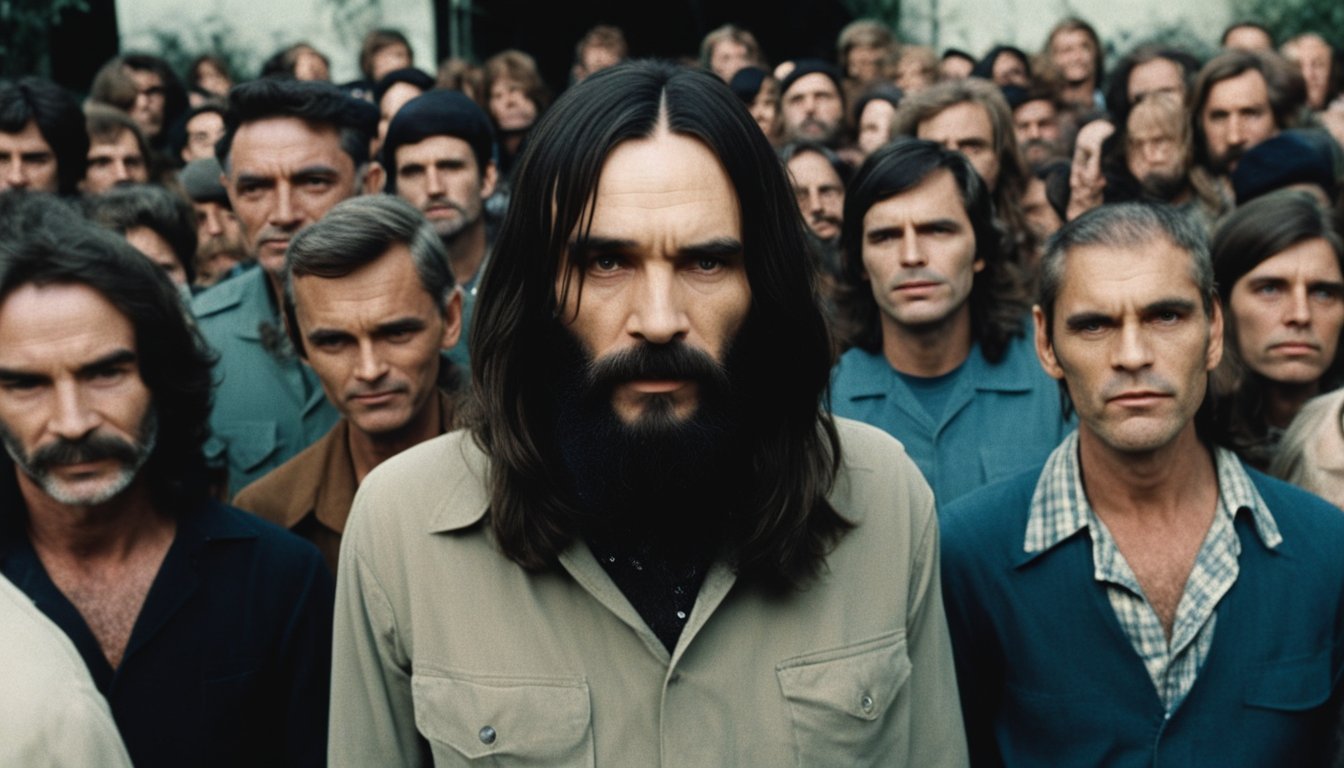Horrifying Documentaries About Charles Manson
Unveiling the Mind of a Cult Leader
The enigma of Charles Manson and his cult continues to fascinate audiences decades after their notorious crimes in the late 1960s. Documentaries have become a vital resource for audiences seeking to understand Manson, his followers, and the cultural impact of their actions. These films often bring new insights into the infamous case, providing historical context, in-depth interviews, and commentary by experts or those directly involved.
A variety of documentaries present differing angles on Manson's life and influence. Some focus on the man himself, examining his psychology and charismatic hold over his followers. Others delve into the larger cultural shockwaves sent through the 1960s, a decade known for its counterculture movements, as Manson's crimes seemingly subverted the era's ethos of peace and love.
With an assortment of available films, viewers can explore the myriad facets of the Manson story. Specific documentaries like "Inside the Manson Cult: The Lost Tapes" offer a compilation of rare footage, while "Helter Skelter: An American Myth" promises a deeper look into the family's descent into criminality. These documentaries aim to shed light on the complexities of the Manson narrative, contributing to an ongoing effort to comprehend one of America's most chilling crime sagas.
The Family: Inside the Manson Cult (2009)
The Family: Inside the Manson Cult is a documentary focusing on the life of Linda Kasabian and her affiliation with Charles Manson's notorious 'Family'. As a former member, Kasabian offers an intimate perspective on the series of events that unfolded at Spahn Ranch leading up to the notorious 1969 Tate/La Bianca murders.
The director, Neil Rawles, alongside writers Matthew Broughton and Kripa Koshy, presents a narrative that navigates the complexities of Manson's influence and the shocking crimes committed by his followers. The film provides a detailed depiction of how Manson coerminated a group of impressionable young individuals into committing heinous crimes.
Key Elements:
Diminutive Perspective: Offers insight from Linda Kasabian, a close associate to Manson who turned into a key witness.
Historical Context: Highlights the infamous 1969 murders, contextually framing them within the wider historical and cultural backdrop.
The documentary employs a mixture of reconstructions and real archival footage to convey the events effectively. Actors, like Ryan Blakely, participate in reenactments to help visualize the narrative.
It is noteworthy that The Family: Inside the Manson Cult has been made available across various platforms, including Prime Video, Tubi TV, and MagellanTV, offering extensive access to audiences interested in examining this dark chapter of American history.
Manson: Music from an Unsound Mind (2019)
"Manson: Music from an Unsound Mind" is a documentary that explores the ambitious musical aspirations of Charles Manson and his connections within the Los Angeles music scene of the 1960s. Directed and written by Tom O'Dell, this film dissects Manson's drive to become a rock star and the notable individuals, including Dennis Wilson of the Beach Boys, who once supported his musical ventures.
The documentary is presented in a format that integrates interviews and archival footage. Key contributors to the film include:
Simon Wells
Jeff Guinn
Anthony DeCurtis
These individuals provide insight into Manson's character and his pursuit of fame, which eventually played a part in his downward spiral into violence.
Key Aspects of the Documentary:
Obsession: Manson's infatuation with rock stardom is the documentary's focal point.
Music Scene Influence: The film analyzes Manson's rise and fall within the LA music scene.
Celebrity Engagement: The interactions between Manson and various celebrities, particularly the Beach Boys, are scrutinized.
Descent into Violence: The documentary depicts how Manson's failed ambitions contributed to his notorious criminal behavior.
"Manson: Music from an Unsound Mind" provides a chilling look at how Manson's unfulfilled dreams and desire for recognition played a role in the tragedy that followed.
Charles Manson: The Final Words (2017)
"Charles Manson: The Final Words" is a documentary that offers a unique perspective on the infamous Manson family murders. Released in 2017, this film is narrated by Rob Zombie, a musician and director known for his work in the horror genre. The documentary distinguishes itself from others by presenting a narrative largely from Charles Manson's viewpoint.
Narration by: Rob Zombie
Main Focus: Manson family murders
Methodology:
Narration by Rob Zombie
Analysis of never-before-seen case files
Exclusive interviews with Charles Manson
The creators utilized exclusive interviews with Manson, conducted during the last year of his life while he was still incarcerated. These interviews are significant as they are some of the final insights into Manson's mind, providing viewers with Manson's reflections on his life, the murders, and his perceived legacy.
"Charles Manson: The Final Words" also delves into topics such as contemporary society, justice, and Manson's time in prison, based on Manson's own conversations. This inclusion aims to give a broader understanding of Manson's thoughts and worldview as he approached the end of his life.
Content includes:
Charles Manson's conversations about society and justice
Insights into decades behind bars
Manson's perspective on the Bernard Crowe shooting and the notorious murders
While the documentary presents a view from Manson's perspective, it is coupled with exclusive materials that provide context to the events and actions of the Manson Family. This approach has resulted in a complex portrayal that has intrigued audiences seeking to understand one of the most chilling figures in American criminal history.
The Manson Murders (2023)
The Manson Murders is a documentary that reflects on the disruptive era of the 1960s, a time known for a widespread countercultural movement. The film gives viewers a glimpse into an age when traditional values and norms were intensively questioned, especially among the youth. It sheds light on the societal backdrop that witnessed the rise of hippies, who became notorious for their ethos of peace and love, encapsulated in phrases like "Make love, not war."
In midst of this era, The Manson Murders focuses on Charles Manson, a name that became synonymous with one of the most disturbing crime stories in American history. The film navigates through Manson's influence and the infamous cult that followed him, known as the "Manson Family." While the documentary is concise, its content dives into the notorious Tate-LaBianca murders and the subsequent arrest of Manson and his followers.
The film's storytelling approach is critical in elucidating not only the heinous acts themselves but also Manson's twisted philosophies and control over his followers.
Inside Manson (2018)
Inside Manson is a documentary that offers a fresh perspective on the notorious Manson cult, infamous for its criminal acts in the late 1960s under the leadership of Charles Manson. It uses a blend of vivid film and photography to present its narrative.
The documentary presents a historical account of the Manson Family, focusing on the psychology of its members and Charles Manson himself. It includes commentary on the social and cultural impact of the family and the lasting shock its actions caused in America.
Inside Manson is geared towards viewers interested in true crime documentaries and historical retellings of notorious figures and events. This documentary promises an immersive experience for those intrigued by the complexities and twisted dynamics within the Manson Family.
Charles Manson: The Man Who Killed the 60s (1995)
"The Man Who Killed the 60s" is a documentary that delves into the life of Charles Manson and his notorious cult, known as the Manson Family. It focuses on the impact of the crimes committed in 1969, including the murder of actress Sharon Tate and others.
The year 1969 marked a significant cultural shift. The documentary explores this transitional period and the influence of the hippie movement. However, the Manson Family's crimes brought a dark end to the decade's ethos of peace and love.
Key Features of the Documentary:
Historical Context: Establishes the cultural landscape of the 1960s.
Criminal Acts: Details the events of the night of August 9th, the methodology and savage nature of the murders.
Aftermath: Examines the broader impact on society and the counterculture movement.
The production does not shy away from the brutality of the crimes, while also analyzing Manson's twisted ideology. The portrayal of Charles Manson examines his manipulation of followers and the eventual unraveling of his influence as the '60s came to a close.
While the documentary presents a chilling account, it serves as a reflection on an era defined by its radical changes that were dramatically altered by the actions of Charles Manson and his followers.
Manson Speaks: Inside the Mind of a Madman
Charles Manson remains one of the most infamous criminal figures in American history. The documentary series, "Manson Speaks: Inside the Mind of a Madman," provides a comprehensive look into this notorious figure's psyche. Divided into two parts, the series features a combination of investigation and commentary to offer an in-depth exploration of Manson's impact.
Part One: Viewers are introduced to Manson, his followers, and the chilling nature of their crimes. It lays the foundation, presenting a biographical account and detailing the 1969 Tate murders.
Part Two: This segment journeys further into the depths of Manson's criminal undertakings, including insights into unsolved cases potentially connected to Manson and his followers.
Notable Features:
Investigative Depth: The series delves into cold cases, such as the murder of Reet Jurvetson.
Cultural Context: It situates Manson within the broader framework of 1960s America, providing historical context to his actions.
This documentary serves not just as a recounting of Manson’s crimes, but also as a portrayal of the fascination that continues to surround this enigmatic figure. It is a significant contribution to the true crime genre, scrutinizing the mind and motives of Charles Manson with a discerning lens.
Manson's Night Of Horror: The Day We Murdered Sharon Tate
"The Day We Murdered Sharon Tate" is a chilling recount of Linda Kasabian's experiences as a member of Charles Manson's so-called 'Family'. The documentary offers a harrowing perspective on the events that unfolded at Spahn's Movie Ranch, leading up to the notorious 1969 killings. It provides a detailed narrative of the sequence of events, delving into the psyche of Kasabian and her role in the Manson Family.
Key Aspects Highlighted in the Documentary:
Linda Kasabian's Testimony: The film sheds light on Kasabian’s story, from her indoctrination into the Manson Family to her eventual departure.
Cultural Impact: It examines the gruesome murders and their enduring impact on American culture.
Psychological Analysis: The documentary also explores the ideologies that Charles Manson instilled in his followers.
The use of archival footage and interviews with experts provides a well-rounded exploration of the circumstances that led to the fateful night. The consequence of this documentary is not only a retelling of historical events but an analysis aimed at understanding the complexities of Manson's influence and the resulting tragedy.
By focusing on an individual member's perspective, the documentary aims to answer questions about the level of involvement and responsibility of Manson's followers. The story is a grim reminder of the capacity for manipulation and the severity of its outcome when directed by a charismatic leader.
Inside the Manson Cult: The Lost Tapes
"Inside the Manson Cult: The Lost Tapes" is a true crime documentary that provides a detailed account of Charles Manson and his infamously devoted followers. Narrated by Liev Schreiber, this production takes a comprehensive look at the dynamics within the Manson family through rare footage and photographs, offering viewers an intimate glimpse into the group.
Released in 2018, "Inside the Manson Cult: The Lost Tapes" dives into the transformation of seemingly ordinary individuals into blindly loyal cult members under Manson’s influence. Its presentation of chilling materials aims to shed light on the cult and its notorious leader from a fresh perspective.
Notably, the documentary source material includes:
Interviews with past members
Never-before-seen footage
Personal photographs of the cult
This exploration into the Manson family is often described as a haunting recount of one of the most infamous crimes in American history. "Inside the Manson Cult: The Lost Tapes" stands as a comprehensive guide for those seeking to understand the intricacies of the Manson cult phenomenon.
Truth and Lies: The Family Manson
"Truth and Lies: The Family Manson" is a documentary that delves into the macabre world of Charles Manson, his fanatical followers, and the infamous murders that shockingly gripped Los Angeles in 1969. This documentary features a compendium of interviews and archival footage, providing insights into the minds of Manson and his cult members.
The documentary gives the audience a glimpse into Manson's turbulent upbringing and the formation of his cult, known as 'The Family'. It meticulously examines the Manson-led spree, including the brutal murder of actress Sharon Tate and six others over two consecutive nights.
Revealing Interviews:
The special includes conversations with Charles Manson himself.
Leslie Van Houten and Patricia Krenwinkel, former cult members, offer their perspectives.
"Truth and Lies: The Family Manson" stands out in the realm of true crime documentaries for casting a stark light on the events and personalities involved in one of history's most chilling crime sagas. Its footage and interviews serve as a sobering reminder of the influence and aftermath of Manson's hold over his followers.
Life After Manson
"Life After Manson" is a notable documentary that turns the lens towards the post-Manson existence of Patricia Krenwinkel, one of the members of the Manson Family. Released in 2014 and highlighted at the Tribeca Film Festival, this short documentary provides a thought-provoking look at the long-term impacts of being part of Charles Manson's notorious cult.
The film specifically delves into Krenwinkel's life, reflecting on her journey from the family to life in prison. Viewers get an intimate portrayal of Krenwinkel grappling with her guilt and seeking to comprehend the magnitude of her actions. The documentary presents this through interviews and personal anecdotes, offering a humanizing glimpse of someone often dismissed as merely a follower of Manson.
Key Aspects of "Life After Manson":
Interviews: Patricia Krenwinkel shares her life experiences, providing personal insights into the psychological grip Manson had on his followers.
Perspective: The documentary shifts the usual focus from Manson himself to the life trajectories of his followers, particularly Krenwinkel.
Reflection: It's a platform for personal reflection, showing a side of the Manson legacy less trodden by mainstream portrayals.
Through "Life After Manson," viewers witness how the past can cast long shadows over one's life, but also how individuals search for redemption and understanding despite their dark histories.
Manson's Girl
"Manson's Girl" is a documentary that dives into the life of Susan Atkins, one of the most notorious members of the Manson Family. Atkins, often referred to as "Sexy Sadie," was an integral figure in the series of murders perpetrated by Charles Manson's followers in 1969. This documentary provides a retrospective view of her role within the family and her involvement in the crimes that shocked Southern California.
The documentary aims to offer insights into Atkins' background, including her occupation as a topless dancer, which contributed to her nickname. It examines her transformation from a performer to a dedicated follower of Manson, eventually becoming one of the key participants in the murder of actress Sharon Tate among others.
Through archival footage and potentially new interviews, "Manson's Girl" seems to contextualize Atkins' actions and her psychological state during her time with Manson. It may also touch on her life after the crimes, providing a full-circle portrayal of her journey from a convicted murderer to a life-term prisoner.
Conclusion
Charles Manson remains a figure of perennial interest, and the body of documentaries examining his life and crimes is extensive. These films provide viewers with historical context, interviews with those directly affected, and a platform for understanding the broader social implications of Manson’s actions.
Key documentaries such as "Charles Manson: The Man Who Killed the 60s" (1995) and "Manson" (1973) feature vital insights into the Manson Family and the era they disrupted. The former captures the stark contrast between the hippie movement’s idealism and the grim reality of Manson’s influence, while the latter offers interviews with Family members that give a direct window into their mindset.
Viewers interested in the complex psychological and sociological threads of the Manson saga will find these documentaries rich with information and perspective. The selected works are not just retellings of the same story but rather pieces of a larger mosaic that delve into varied aspects of Manson's history, from his adherents to the societal shock waves his crimes sent.
In exploring these documentaries, audiences can deepen their understanding of one of the most notorious figures of the 20th century and the dark chapter he authored in American history.
#real life events #lifetime movie #tv series #deep dive #linas phillips

